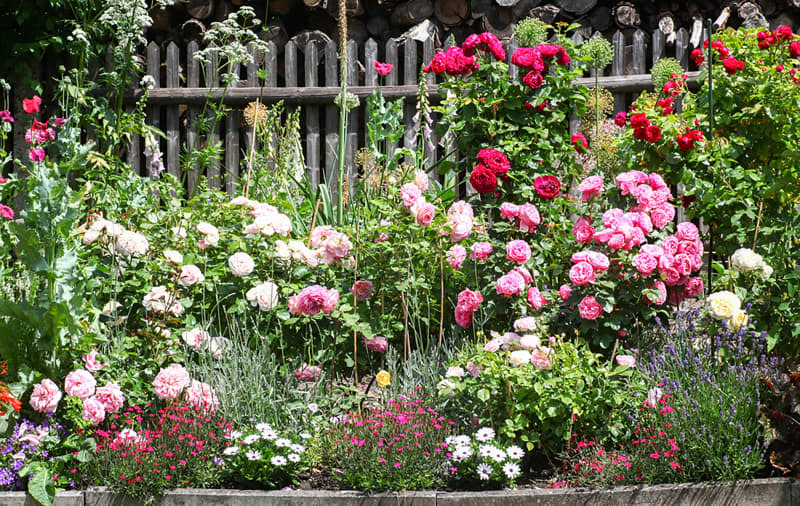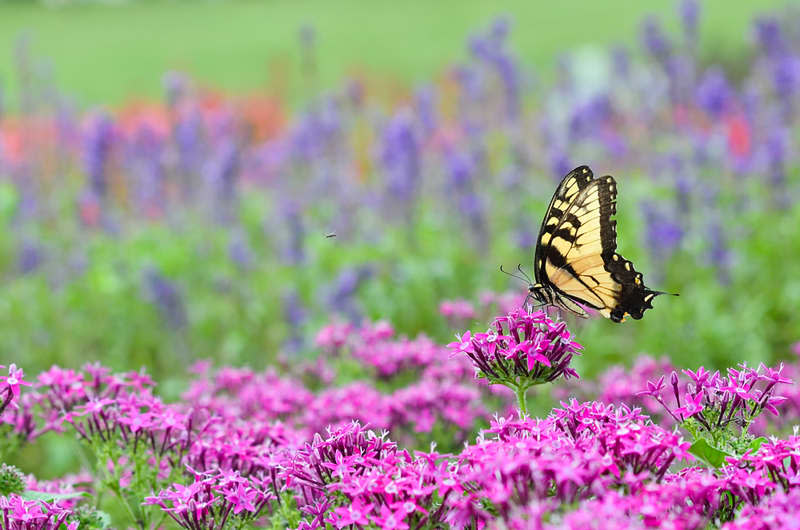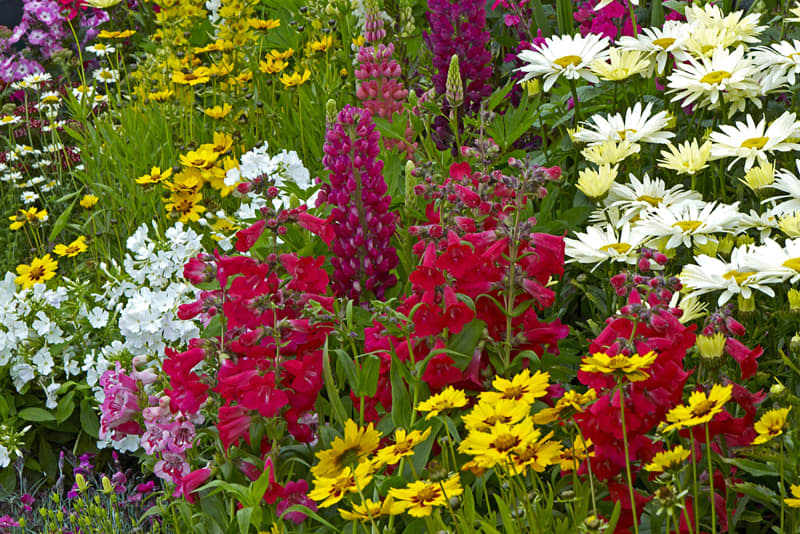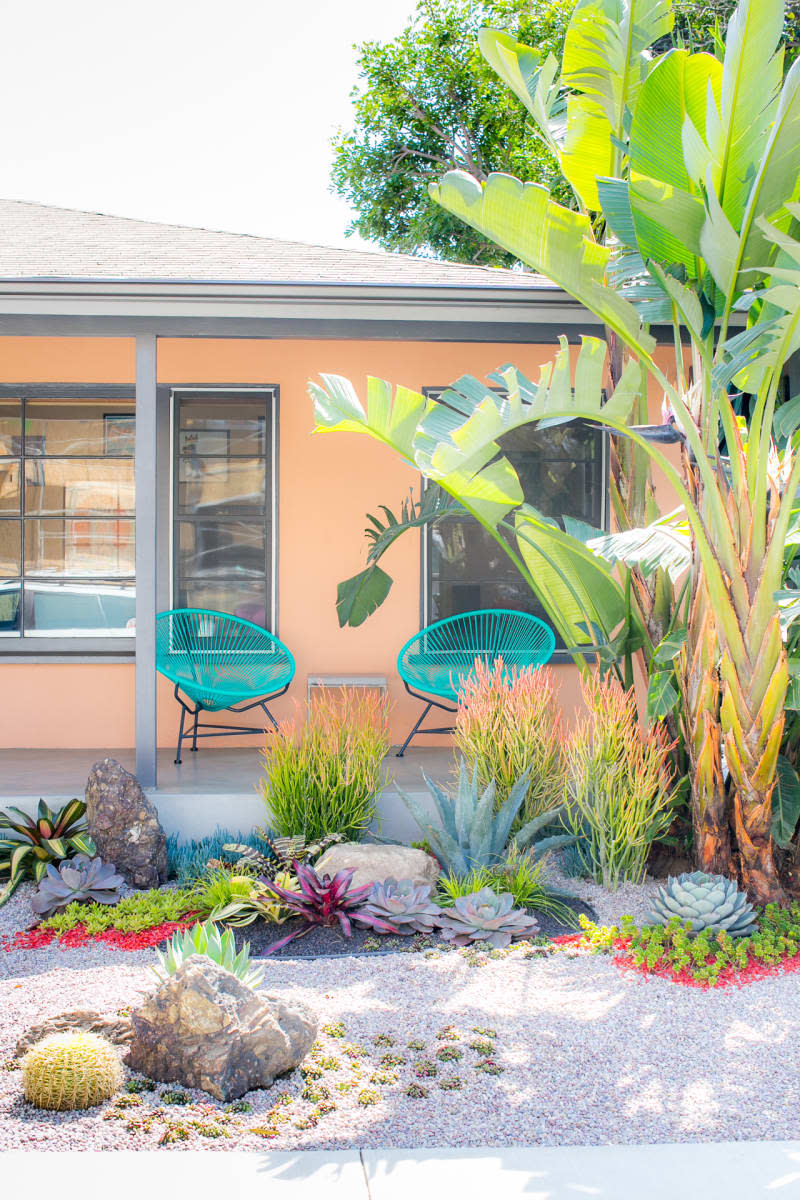3 Landscaping Trends That Will Dominate 2024, According to Pros

Spring is officially in the air, which means that it’s almost time to give your outdoor space some much-needed love and attention. Whether you have just enough space for growing a patio garden or you have more yard than you know what to do with, you might be looking to try something new this year.
As an avid gardener myself, I was curious what trends we can expect to see this year when it comes to landscaping. I spoke to three different gardening pros to get their thoughts. Here, find the top three landscaping trends of 2024, according to the experts.

Providing for Pollinators
Pollinator gardens aren’t anything new, but Justin Hancock, horticulturist at Costa Farms, says that they are here to stay this year. In fact, he expects that this year, home gardeners will expand their breadth of knowledge and expertise on the subject to better support an entire ecosystem of pollinators and beneficial bugs in their landscapes. For example, to attract butterflies to your garden Hancock says you need more than just nectar plants — you also need host plants (i.e., the plants that feed their caterpillars).
“While bees and butterflies have traditionally gotten most of the bug love, we’re also seeing greater awareness and interest in predatory insects (ladybugs, lacewings, pirate bugs, etc.) that attack insect pests, helping create a natural balance in the landscape with less — or no — pesticide use,” he adds.
Looking to try out this trend for yourself this year? Be sure to do some research into the nectar and host plants that will attract the kind of pollinators you are interested in. Opting for native plants — plants original to your area — is the best way to create a well-balanced, eco-friendly, and low-maintenance landscape that pollinators are sure to love.

Growing a Cutting Garden
Another landscaping trend that has been taking over gardens everywhere lately is cutting gardens, or gardens planted with flowers that are intended to be cut for floral arrangements. Cutting gardens feature flowers with showy blooms and long stems that can be easily snipped for display.
Laura Walsh, director of marketing at Oasis Forage Products, predicts cutting gardens will be all the rage in 2024. “Gardeners, nature-lovers, and home decor enthusiasts are embracing the trend of planting cutting gardens to indulge in the art of foraging and enjoy fresh flowers at home,” she says.
As an owner and lover of my own cutting garden, I can personally attest to the value of this trend. Cutting gardens can be completely customized to your own unique floral tastes and preferences, and you can enjoy multiple iterations of your cutting garden by planting several kinds of seasonal blooms throughout the year.
Luckily, starting your own cutting garden is simple. Choose a location that receives plenty of sunlight and use lots of fresh, rich soil to give your garden a good start. Expert tip: Plant your flowers in rows just as you would plant vegetables in a veggie garden to set yourself up for easy cutting and pruning down the road!
Tulips, dahlias, peonies, ranunculus, sunflowers, and gladiolus are all popular choices for cutting gardens, but you might have to wait to plant some of these options. Tulips, for example, grow from bulbs that need to be planted in the fall; peony bulbs also do best when planted in fall. If these are on your wish list, consider this your planting year and next year your harvest year.
But sunflowers and zinnias can both be planted from seed this spring, as can marigolds and other varieties of fast-growing flowers.

Creating Sustainable, Eco-Friendly Landscapes
Experts agree that the trend of creating sustainable, eco-friendly landscapes will continue to be popular in 2024. “With the rising temperatures and the growing water restrictions across much of the south and western United States, many homeowners are opting to revamp their gardens to be more sustainable and eco-friendly,” says Cate Singleton, director of design at Tilly, an online landscape design company.
This trend can manifest in several different ways, from replacing traditional grass yards with more eco-friendly grass-free lawn alternatives (think: clover lawns, wildflower gardens, and rock gardens) to incorporating smart technology into your irrigation systems. The best part is, not only are these options eco-friendly, but they also make for a lower-maintenance landscape for you too. It’s a win-win!
